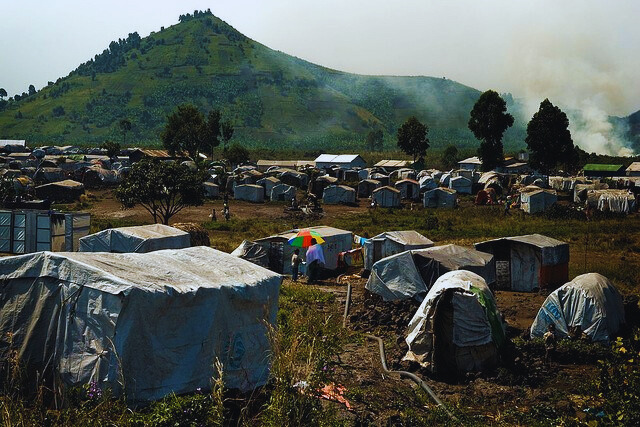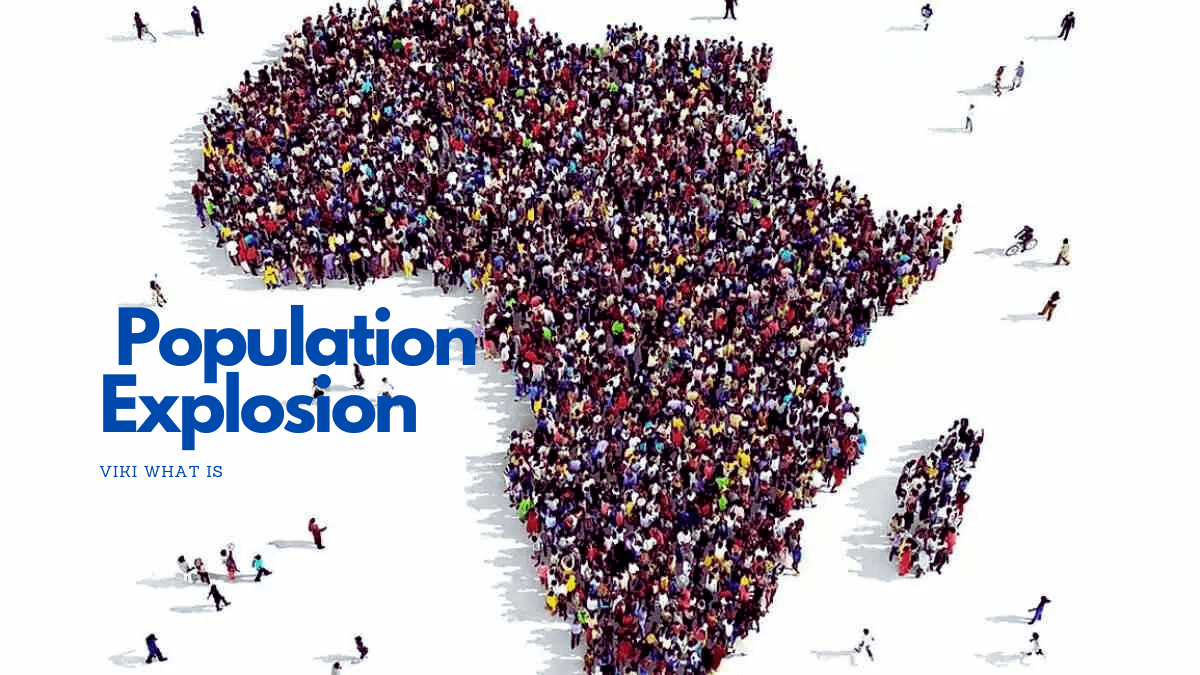Population explosion refers to a significant and rapid increase in the human population over a short period. This phenomenon was first noted on a smaller scale between 1750 and 1950, primarily in Europe and America, characterized by moderate intensity. It signifies a situation where the number of individuals in a specific area suddenly rises at a given time, often outpacing the economy’s ability to cope with the growth and leading to various socio-economic and environmental challenges. The increase in human population has been relatively stable for most of human history until recent centuries when it started to grow exponentially, amounting to around 83 million additional people each year globally.
Understanding Population Explosion
The Basics

The term “population explosion” refers to the rapid increase in the global human population over the last century. This phenomenon is primarily attributed to significant reductions in mortality rates, advancements in medical technology, improvements in agricultural productivity, and increased life expectancy, which have all contributed to the acceleration of population growth. Key factors driving population growth include natural change (the difference between births and deaths) and migration. Concerns associated with this population boom involve the strain on food security, the depletion of natural resources, the loss of biodiversity, and the challenges in ensuring economic stability and access to health services for the growing population.
Causes of Population Explosion
Economic Factors

Economic factors play a significant role in influencing population growth. Factors such as employment rates, education levels, and overall economic conditions directly impact fertility rates and migration patterns, which in turn affect population size. Higher employment rates and better education levels can lead to lower fertility rates as people prioritize careers and delay starting families. Conversely, in areas with lower economic development, higher fertility rates are observed due to the lack of access to education and employment opportunities. Economic prosperity or hardship can also influence migration, as people move towards areas offering better economic prospects, contributing to population growth in those regions.
Social Factors
Social factors contributing to population explosion encompass cultural institutions, religious beliefs, economic arrangements, and family organization. These elements deeply influence human behavior and decisions related to family size, fertility rates, and migration patterns. Traditional cultural and religious norms may encourage larger families, thus accelerating population growth. Economic arrangements and family organization also play critical roles, as in some societies, having more children is seen as beneficial for economic support in older age or for labor in agrarian economies. These social dynamics, combined with improvements in healthcare leading to lower mortality rates, contribute significantly to the population explosion.
Political Factors
Political factors contributing to population explosion include policies that indirectly promote higher fertility rates, lack of effective family planning programs, and political instability leading to underinvestment in health and education. Rapid population growth can strain political systems, challenging the stability of democratic bodies and potentially leading to social and political instability due to resource scarcity and food insecurity. Moreover, political decisions and institutional failures, rather than demographic factors alone, are significant in driving poverty and famine, which are closely linked to population dynamics. Political motivations underlying population development strategies also play a role, as they aim at social development that could, in turn, affect population growth rates.
Effects of Population Explosion
On the Environment

Population explosion adversely impacts the environment in several ways. It contributes to environmental degradation through increased CO2 emissions, leading to climate change. The growing demand for land due to population increase results in deforestation and habitat destruction, significantly reducing biodiversity and disturbing natural habitats. This expansion into natural areas causes a loss of flora and fauna, leading to ecological imbalance. Furthermore, overpopulation intensifies the consumption of natural resources, resulting in water scarcity, air pollution, and increased waste production. Overfishing and the depletion of wildlife are direct consequences of overpopulation, which compromise the sustainability of ecosystems and the availability of resources for future generations.
On the Economy
The effects of population explosion on the economy are multifaceted. While a growing population can increase the size of the labor force, thereby providing more human capital essential for economic growth, it also creates significant challenges. High population growth can exert pressure on limited natural resources, which in turn can reduce private and public capital formation, negatively impacting economic development. This scenario often results in a lowered standard of living, especially impacting the poor the most, as resources become increasingly scarce and competition for these resources intensifies. Furthermore, the implications of overpopulation, such as competition for limited resources like water, arable land, and energy, can lead to economic disparities and social unrest, complicating efforts toward sustainable economic prosperity.
On Society
The population explosion has far-reaching implications and impacts on society. One of the primary consequences is the intensification of competition for limited resources, which can lead to increased poverty, stress on social services, and degradation of public health systems. This competition can exacerbate social inequalities and contribute to a heightened sense of insecurity among communities. Rapid population growth can also lead to environmental degradation, including deforestation, decreased biodiversity, and increases in pollution, which in turn affect human health and well-being. Moreover, the growing poverty resulting from these pressures can further strain societal structures, contributing to a cycle of poverty that is difficult to break. This scenario is particularly dire for the poor, who bear the brunt of the consequences, including a lower standard of living and limited access to necessary resources.
Tackling Population Explosion
Governmental Measures

Governments employ various strategies to tackle the challenges posed by population explosion. One effective approach is strengthening family-planning services, aiming to slow population growth and potentially limit global population size to manageable figures by mid-century. However, it’s essential to note that the U.S., for instance, does not endorse population “stabilization” or “control,” emphasizing that the “ideal” family size should be determined by individual desires rather than governmental mandates.
Efforts to reduce population growth have also been framed within broader goals of promoting economic development and reducing poverty. Such objectives were recognized as key government targets in international forums like the 1994 International Conference on Population and Development. Legal frameworks and policies can offer a variety of measures to reduce birth rates, further analyzing governmental power in regulating population growth. National population policies may aim to align population size with available resources, leaving family size decisions to individuals, as seen in various countries’ official stances. Finally, addressing global population growth is also seen as crucial for easing pressures on biodiversity and human communities, highlighting the link between consumption habits in high-wealth countries and environmental sustainability.
Technological Solutions
Technological and innovative solutions play a crucial role in addressing the challenges posed by population explosion. Innovations such as biotechnology, renewable energy, and advancements in agricultural techniques can significantly mitigate the effects of overpopulation by enhancing food security, reducing reliance on finite resources, and providing alternatives to scarce resources. Additionally, technological progress does not necessarily have to widen inequality; with proper policies, it can support inclusive growth in developing countries, generating more jobs and opportunities even in the face of population growth.
However, relying solely on technology as a “magic bullet” to solve overpopulation is unrealistic, given the long deployment time of large-scale technologies. A combination of good ideas, policies, and both high and low technologies can collectively find solutions to population challenges. Importantly, the balance between technological innovation and human population growth is delicate; if not managed well, technological advancements could collapse along with human populations. Technology can also play a role in reducing our impact on the planet, helping to manage growth and thrive with fewer resources.
Social Reforms
Addressing the challenges of population explosion requires a multifaceted approach, incorporating social reforms that enhance global justice and improve lives. Key strategies include:
- Increasing Access to Family Planning and Education: Providing universal access to family planning services and comprehensive sex education can empower individuals to make informed decisions about reproduction, reducing unintended pregnancies and slowing population growth.
- Promoting Sustainable Lifestyles: Encouraging sustainable consumption habits, particularly in high-wealth countries, can alleviate the pressure on biodiversity and human communities caused by overconsumption and waste.
- Broadening Population Policy Beyond Family Planning: While family planning is crucial, it is insufficient alone to curb rapid population growth. Policies should also address poverty, gender inequality, and education to tackle the social factors at the base of population growth.
- Enhancing Global Justice: Implementing policies that address the root causes of poverty and inequality can help stabilize population growth rates by improving overall living conditions and economic opportunities for the world’s most vulnerable populations.
- Sustainable Development Integration: Rapid population growth complicates efforts towards sustainable development, especially in lower-income countries. Integrating population dynamics into development planning is essential for achieving sustainable outcomes.
Examples of Population Control Success
Country Case Studies

Country case studies illustrate diverse strategies for population control and their impacts on societal well-being. Key examples include:
- East Asia’s Economic Growth Interplay: This region showcases the relationship between population change and economic advancement, emphasizing the importance of managing demographic dynamics for sustainable development.
- Choice-Based Population Policies: A report highlights successful, effective choice-based population policies, offering short case studies from four different countries. These policies emphasize empowerment and choice, leading to positive outcomes in population management.
- Global Family Planning Revolution: The book covers 23 country case studies, illustrating the global shift towards family planning over three decades. It emphasizes the critical role of family planning in population control, despite recent funding challenges.
- Puerto Rico’s Experience: Historically, Puerto Rico’s population control measures were influenced by economic and military considerations following the U.S. invasion in 1898. This case study reveals the complex motivations behind population control efforts.
- Egypt’s Demographic Trends: Egypt faces continuing challenges with its growing population. Addressing these challenges is crucial for the nation’s benefit, highlighting the need for effective population policies.
Conclusion
Population explosion is a complex issue that touches on economics, environment, and social structures. Like solving a giant, multi-dimensional puzzle, addressing it requires cooperation, innovation, and perseverance. As we move forward, the choices we make today will shape the world for generations to come. Will we manage to balance the scales, or will we be overwhelmed by our numbers? Only time will tell.
Read also: What is Meant by Applied Quantum Computing?
FAQs
Q. What is the main cause of population explosion?
The main cause is a combination of high birth rates and lower mortality rates, often fueled by economic, social, and sometimes political factors.
Q. Can population explosion be reversed?
Yes, through comprehensive strategies involving government policy, technological innovation, and social reform, population growth can be slowed and even reversed.
Q. What are the consequences of ignoring population explosion?
Ignoring population explosion can lead to severe strain on the environment, economy, and social services, ultimately decreasing the quality of life for everyone.
Q. How does population explosion affect poverty?
Population explosion can exacerbate poverty by increasing competition for jobs, lowering wages, and straining resources and social services, making it harder for people to escape poverty.
Q. What are some examples of countries that have successfully managed their population growth?
Countries like Thailand, Bangladesh, and Iran have made significant progress in managing population growth through a combination of family planning initiatives, education, and social reforms.




